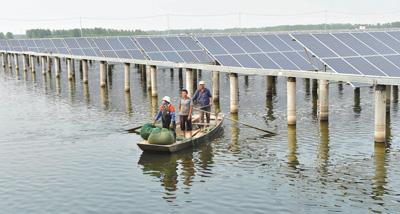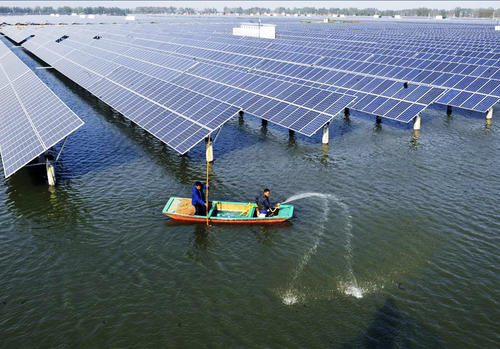Floating photovoltaic power generation project
Floating photovoltaic power generation project
Sigeng Hainan helitian energy Floating photovoltaic power generation project 15MW (2017 in Hainan)


A floating photovoltaic (PV) power generation project, also known as a floating solar farm or floating solar power plant, involves the installation of solar panels on water bodies such as reservoirs, lakes, or ponds. Here's an overview of the key aspects involved in such a project:
1. Site Assessment:
Identify a suitable water body for the project, considering factors like size, depth, water quality, and proximity to electrical infrastructure. Conduct a detailed feasibility study to assess the solar resource potential, water surface area available for the installation, and any environmental considerations.
2. Design and Engineering:
Engage with engineers and design professionals to develop a comprehensive floating PV system design. This includes determining the layout, panel orientation, anchoring system, buoyancy requirements, electrical configuration, and other technical aspects. Consider local regulations, safety standards, and environmental impact mitigation measures during the design process.
3. Floating Structures:
Select appropriate floating structures that provide buoyancy and stability for the solar panels. These structures are typically made of buoyant materials like high-density polyethylene (HDPE) or other lightweight materials. Ensure proper sizing, anchoring, and arrangement of the floating structures based on the specific water body conditions and project requirements.
4. Solar Panel Installation:
Mount the photovoltaic modules onto the floating structures according to the specified layout and orientation. Connect the panels electrically using appropriate wiring and connectors.
5. Electrical Infrastructure:
Install necessary electrical components, including inverters, transformers, combiner boxes, cables, and other equipment. Ensure proper grounding, protection, and interconnection with the main power grid or off-grid systems, depending on the project objectives.
6. Anchoring and Mooring System:
Implement a robust anchoring and mooring system to secure the floating structures in place. This may involve the use of anchors, chains, and buoys to withstand wind, waves, and water currents while maintaining the desired position and alignment.
7. Grid Connection:
Connect the generated electricity to the local electrical grid, if applicable, through underwater or underground cables. Ensure compliance with grid interconnection requirements and obtain necessary approvals from relevant authorities.
8. Operations and Maintenance:
Establish an operations and maintenance plan for regular monitoring, inspection, and maintenance of the floating PV system. This includes cleaning the solar panels, inspecting electrical connections, floats, and mooring systems, and addressing any maintenance needs promptly. Data logging and monitoring systems can help track performance and identify any issues.
9. Environmental Considerations:
Implement measures to minimize the environmental impact of the project. This may involve considering wildlife habitats, water quality preservation, and other ecological factors. Additionally, proper end-of-life disposal plans for decommissioned panels should be incorporated.
10. Safety and Security:
Adhere to safety protocols during project construction and ensure proper security measures to protect the floating PV system from theft or vandalism.
Floating photovoltaic power generation projects offer unique benefits such as increased land use efficiency, reduced water evaporation, and potential synergy with water management. However, it is crucial to engage experienced professionals and consult local regulations and standards to ensure a successful and sustainable project implementation.
